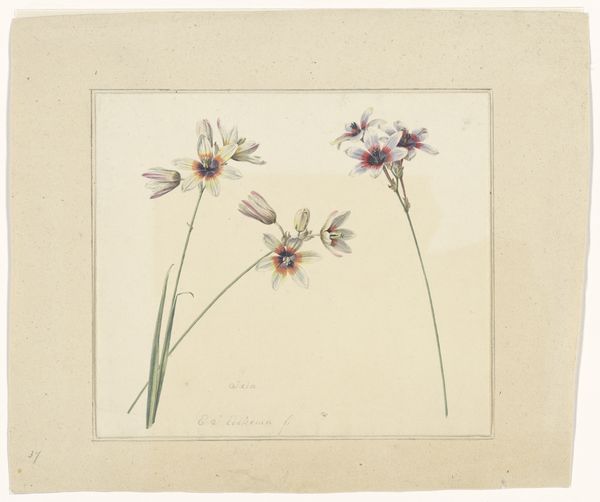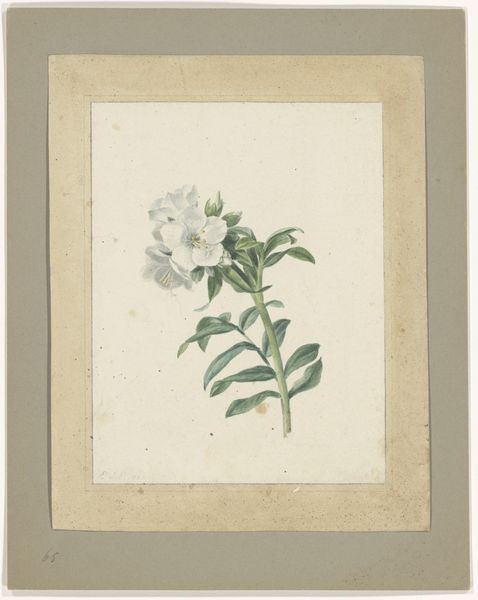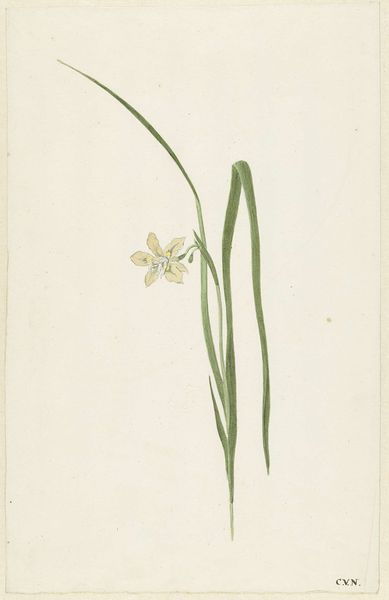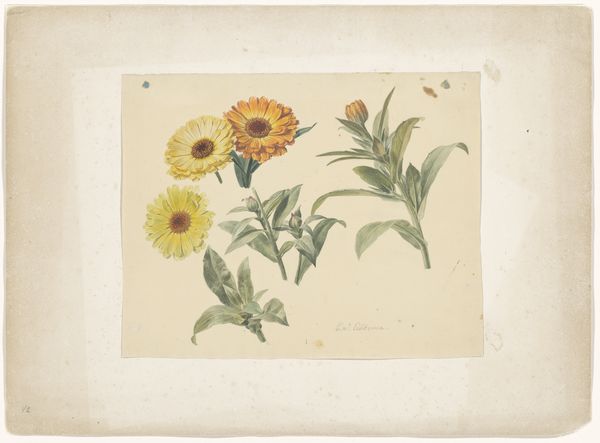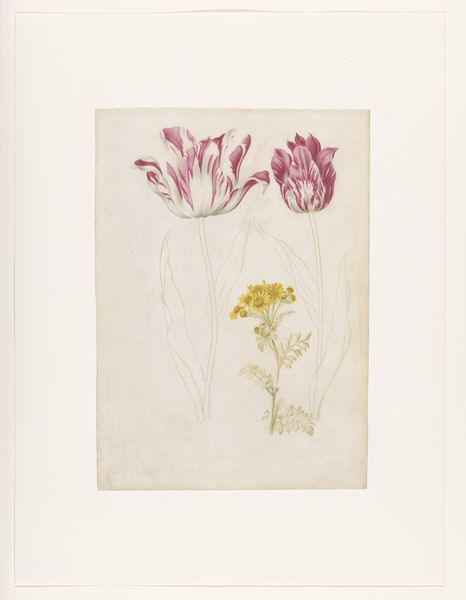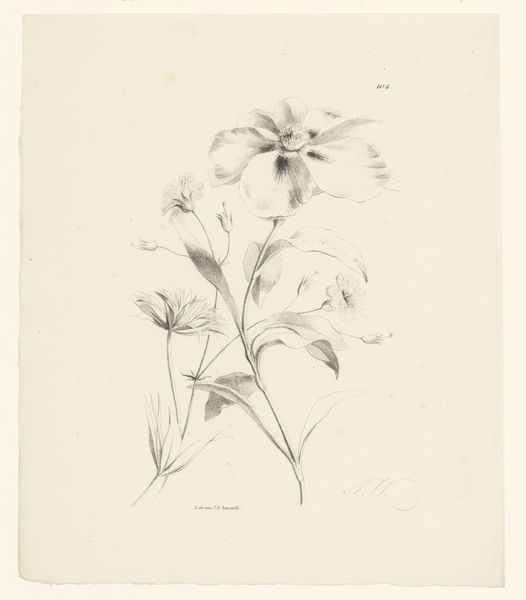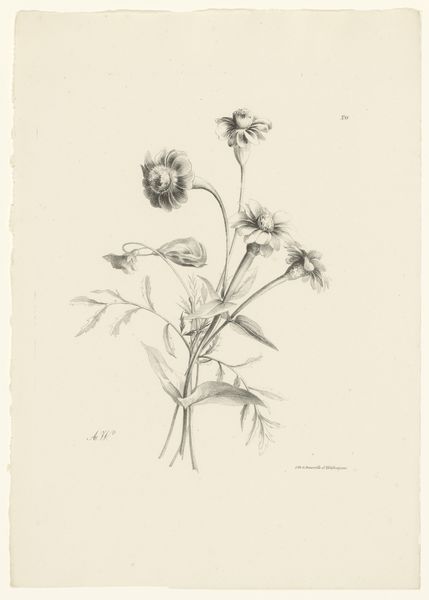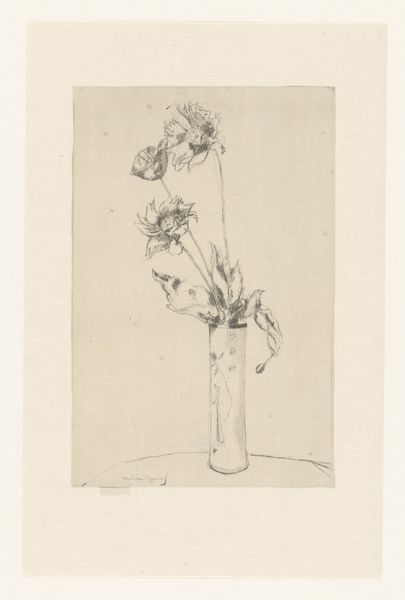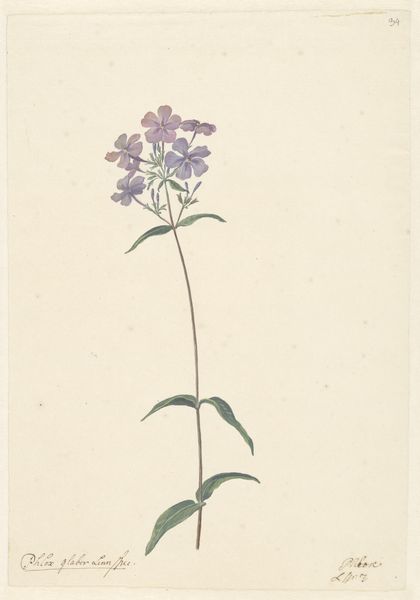
drawing, paper, watercolor
#
drawing
#
landscape
#
pastel colours
#
paper
#
watercolor
#
romanticism
#
ceramic
#
watercolour illustration
#
realism
Dimensions: height 253 mm, width 167 mm
Copyright: Rijks Museum: Open Domain
Curator: Welcome. We’re standing before “Bloem,” a delicate watercolor and pencil drawing on paper, created circa 1815-1830 by Eelke Jelles Eelkema. Editor: Immediately, I'm struck by the quiet simplicity. There’s a real sense of purity evoked by the muted pastel colors and the close-up view of the flower itself. Curator: Indeed. Eelkema’s artistic language is evident in the controlled strokes and precision of the floral study. Notice the intricate details captured in the layered petal structures and veining of the leaves. It epitomizes a study in realism with a hint of romanticism. Editor: Absolutely, but let's consider the social context. During this era, floral symbolism was prominent. What could the daffodil, or jonquil, have represented for Eelkema and his audience? Ideas of unrequited love, perhaps, or the dawn of new beginnings, both powerful social concepts when love between people could lead to social castigation or exile. Curator: Certainly, considering symbolism adds a layer. Yet, the technical skill should not be overlooked; Eelkema's use of watercolor lends the piece a softness, an almost ethereal quality, focusing us on the forms and tonality rather than the potential meanings outside the frame. The ceramic-like glaze created with watercolor feels especially current. Editor: However, can we truly separate technique from the cultural and historical backdrop? Aren't artistic choices like color and composition always, in some way, reflections of a worldview shaped by social realities? I read here, that even this romanticist and realist approach could mirror the search for solace, an escape into nature due to social and political instability of the early 19th century. Curator: An intriguing reading. But even without any explicit contextual knowledge, we can appreciate the elegant balance achieved within the composition. The placement of the flowers, the angle of the stem, it all contributes to an harmonious visual experience. Editor: Fair enough, there's beauty in formal understanding alone. Though for me, art breathes deepest when intertwined with lived experiences and sociohistorical layers. I would like to think, while appreciating beauty, how our understanding and acceptance for individual differences blossomed into new appreciation and compassion. Curator: A powerful thought to keep. What an engaging way to examine this tranquil still life. Editor: Yes, "Bloem" offers space for both quiet reflection and deeper interrogation of the world it reflects.
Comments
No comments
Be the first to comment and join the conversation on the ultimate creative platform.
